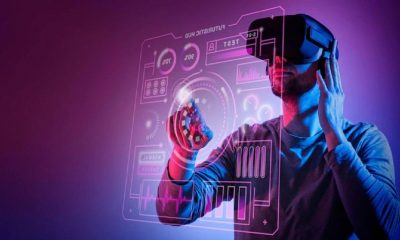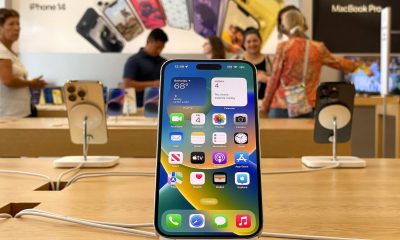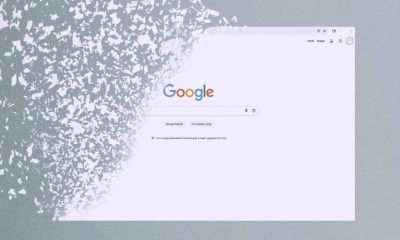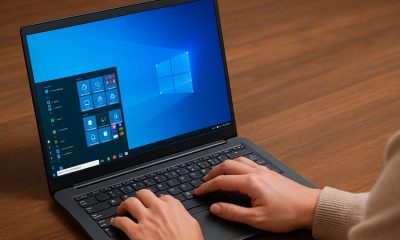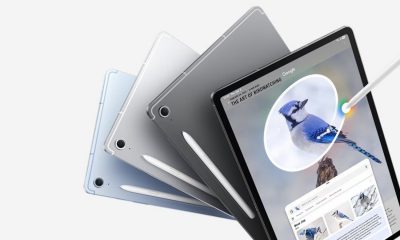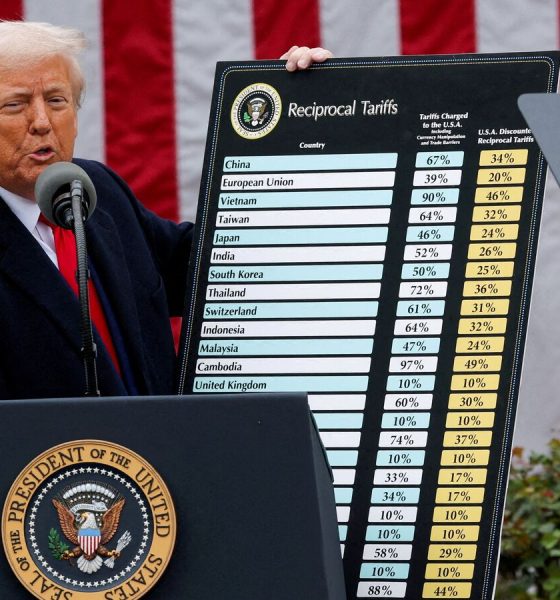
Technology
The ‘hand of AI’: From US tariff policies to global trade strategy – Crypto News
“…Apparently it’s very detailed and thought out. Big if true. The contents of the report seem vaguely Deep Research ish..,” Rohit Krishnan, chief product officer of Bodo.ai, posted on X.
He added that this might be “the first large-scale application of AI technology to geopolitics.. 4o, o3 high, Gemini 2.5 pro, Claude 3.7, Grok all give the same answer to the question on how to impose tariffs easily…” and termed the trend “Vibe Governing”.
“…Trump’s crazy tariff schedule was probably LLM-generated!..,” corroborated US-based cognitive scientist Gary Marcus.
Vibe coding, where programmers rarely review code, is a term coined by Andrej Karpathy, AI researcher and former director of AI at Tesla, on 6 February. In this context, “vibe governing” would imply minimal review of the AI output when crafting the tariff document.
Suspicions only grew further when it emerged that tiny Norfolk Island and the remote Heard and McDonald Islands near Antarctica—home mostly to penguins—were also included in the tariff list. Would human policy makers have done so? Or did some LLM hallucinate (put out wrong information confidently)?
Not so simple
That said, these claims will remain speculative unless backed by concrete evidence. Further, those like Arthur Breitman, an early architect of the Tezos protocol, counter that LLMs “…come up to the same answer because it’s just linear feedback, it’s the simplest most straightforward thing you could devise, doesn’t mean the admin (Trump administration) used LLMs”.
But the matter is not that simple since AI models can even reason (though, not as we humans do), making it harder to differentiate their output from that of humans. Cameron R. Jones and Benjamin K. Bergen from the Department of Cognitive Science at the University of California San Diego pointed out in their 31 March paper that four systems – ELIZA, GPT-4o, LLaMa-3.1-405B, and GPT-4.5 – that they evaluated have already passed the Turing test.
Alan Turing proposed the imitation game 75 years ago as a method of determining whether machines could be said to be intelligent. While some question its relevance in the context of today’s advanced reasoning models, it remains a credible benchmark.
Also Read | TradeNet system, which automates trade documentation and expedites approvals, cutting processing times from days to minutes.
China employs AI to analyse global trade patterns, allowing its exporters to adjust strategies based on real-time insights.
Companies are deploying ML models to predict port congestion, assess inventory needs and enhance last-mile delivery networks. This results in cost savings and greater efficiency in global trade operations.
Financial institutions supporting trade are also embracing AI for fraud detection, credit risk assessment and automated loan approvals. AI-driven trade finance platforms are making it easier for small and medium-sized enterprises to access funding, fostering inclusivity in international commerce.
Leveraging GenAI too
Generative AI (GenAI), too, is enhancing trade documentation and contract management by automating the creation and verification of trade agreements, invoices and compliance reports. This reduces paperwork, minimises human error and accelerates cross-border transactions.
AI-powered chatbots and virtual assistants are improving customer support for exporters and importers, providing instant responses to regulatory inquiries and documentation requirements.
Also Read | Artificial Intelligence and International Trade: Some Preliminary Implications‘ notes that AI-driven machine translation reduces language barriers in trade, boosting exports, especially for e-retailers. In logistics, AI enhances efficiency by optimising smart warehouses through better forecasting and coordination.
The financial sector also benefits, with AI improving access to credit, refining risk assessments and strengthening anti-money laundering compliance, among other applications.
According to the OECD, AI-driven machine translation reduces language barriers in trade, boosting exports, especially for e-retailers. In logistics, AI enhances efficiency by optimising smart warehouses through better forecasting and coordination.
The Harmonized System (HS) is a global classification system for traded goods that assigns codes to regulate tariffs and customs rules. AI helps businesses match products to HS codes, ensuring compliance and reducing errors. It also aids in detecting counterfeit goods, enhancing trade security and efficiency, the paper notes.
Trade growth fillip
A report published by the World Trade Organization (WTO) in November 2024 titled, ‘Trading with Intelligence: How AI Shapes and Is Shaped by International Trade’, reiterates how AI can lower trade costs, transform trade in services, boost the trade of AI-related goods and services and redefine the comparative advantages of different economies. It underscores that by reducing trade costs, AI could help level the playing field, particularly for developing economies and small businesses.
These groups, the report explains, often face significant barriers when trying to access global markets. With AI, they could better overcome these barriers, facilitating greater participation in international trade. In an optimistic scenario of widespread AI adoption and high productivity growth, global real trade growth could increase by nearly 14 percentage points by 2040.
In contrast, a more cautious scenario with uneven AI adoption and a lower increase in productivity predicts a trade growth of just under 7 percentage points. While high-income economies are expected to see the largest productivity gains, lower-income economies have a greater potential to reduce trade costs and enhance competitiveness through AI technologies.
Furthermore, AI is set to transform trade patterns in services, especially digitally delivered services. In an optimistic scenario, these services could see cumulative growth of almost 18 percentage points. This shift highlights how AI could significantly reshape the landscape of global trade, making it more efficient and inclusive for businesses of all sizes and regions, according to the WTO report.
The WTO also highlights that AI can forecast weather and enhance severe event prediction including tracking tropical cyclones. It can facilitate sustainable trade and protect biodiversity by means of tools such as image-based detection of illegal wildlife trade, high-risk animal tracking, food value chain optimisation and source monitoring and tracking.
Concerns remain
AI models, to begin with, remain opaque, which can lead to challenges in understanding how they arrive at their decisions or predictions. Another major challenge is the quality and availability of data since AI systems rely on vast amounts of accurate data, which may not always be accessible, particularly in developing economies.
For instance, systems could flag shipments inaccurately, either delaying goods unnecessarily or overlooking illegal or unsafe items. AI tools used to detect fraud or trade compliance violations sometimes produce false positives or fail to recognise more sophisticated forms of trade fraud.
-
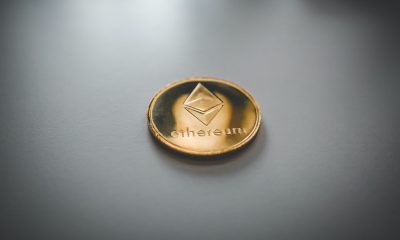
 Blockchain6 days ago
Blockchain6 days agoEthereum Price Performance Could Hinge On This Binance Metric — Here’s Why – Crypto News
-
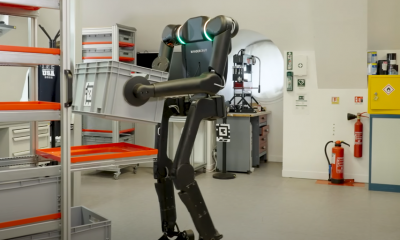
 Cryptocurrency1 week ago
Cryptocurrency1 week agoFrench Exoskeleton Company Wandercraft Pivots to Humanoid Robots – Crypto News
-

 Cryptocurrency1 week ago
Cryptocurrency1 week agoFrench Exoskeleton Company Wandercraft Pivots to Humanoid Robots – Crypto News
-

 Technology1 week ago
Technology1 week agoWhy Anthropic CEO Dario Amodei thinks a 10-year AI regulation freeze is dangerous – Crypto News
-
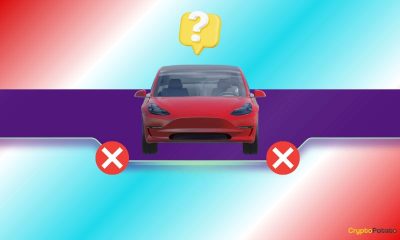
 Cryptocurrency1 week ago
Cryptocurrency1 week agoDonald Trump Ready to Ditch His Tesla Amid Musk Feud? (Report) – Crypto News
-

 Cryptocurrency1 week ago
Cryptocurrency1 week agoTrump-Elon feud Erupts, Crypto falls, Coinbase to list Fartcoin – Crypto News
-

 others1 week ago
others1 week agoCanadian Dollar gives back gains despite upbeat jobs data – Crypto News
-

 Technology1 week ago
Technology1 week agoBest juicer for home in 2025: Top 10 choices for your family’s good health from brands like Philips, Borosil and more – Crypto News
-
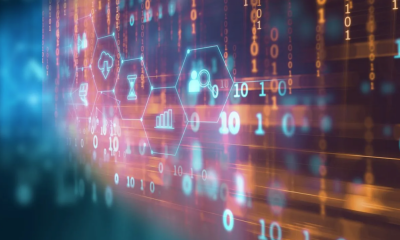
 Blockchain6 days ago
Blockchain6 days agoOpenLedger Invests $25 Million to Combat ‘Extractive’ AI Economy – Crypto News
-

 others5 days ago
others5 days agoGold price in India: Rates on June 10 – Crypto News
-
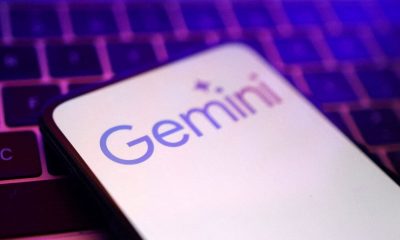
 Technology1 week ago
Technology1 week agoGemini can now schedule tasks, send reminders and keep you on track: Here’s how it works – Crypto News
-

 Technology7 days ago
Technology7 days agoHow artificial intelligence caught leukaemia in Maharashtra’s Parbhani – Crypto News
-

 Technology6 days ago
Technology6 days agoOpenAI CEO Sam Altman says AI is like an intern today, but it will soon match experienced software engineers – Crypto News
-

 Technology4 days ago
Technology4 days agoCircle IPO shows strong crypto market investor demand – Crypto News
-
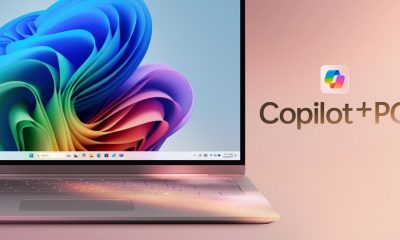
 Technology1 week ago
Technology1 week agoMicrosoft integrates AI shopping into Copilot app, bringing price tracking and smart comparisons – Crypto News
-

 others1 week ago
others1 week agoGold prices fall as the USD extends gains post NFP – Crypto News
-

 Cryptocurrency6 days ago
Cryptocurrency6 days agoTRON: Who’s fueling TRX’s breakout? It’s not whales, here’s the answer! – Crypto News
-
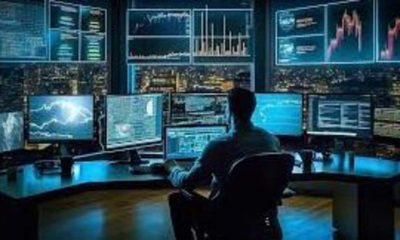
 Technology1 week ago
Technology1 week agoThe Quiet Voices Questioning China’s AI Hype – Crypto News
-
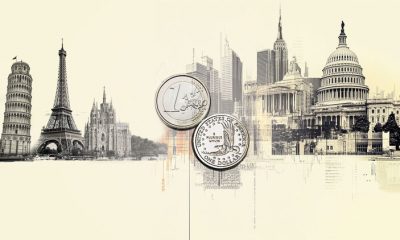
 others1 week ago
others1 week agoEUR/USD retreats from multi-week highs ahead of Eurozone GDP and consumption data – Crypto News
-

 Technology1 week ago
Technology1 week agoWeekly Tech Recap: Resident Evil Requiem release date revealed, OnePlus 13s makes India debut and more – Crypto News
-

 Technology7 days ago
Technology7 days agoOnePlus 13s review: A near-perfect compact phone, minus a few flagship perks – Crypto News
-

 Technology7 days ago
Technology7 days agoIndia targets indigenous 2nm, Nvidia-level GPU by 2030 – Crypto News
-

 Technology5 days ago
Technology5 days agoiOS 26’s Liquid Glass redesign met with backlash from Apple users: ‘Please tone it down’ – Crypto News
-

 others5 days ago
others5 days agoStock Market Pullback in Sight As Several of America’s Problems Still Remain, Warns Former JPMorgan Strategist – Crypto News
-

 others1 week ago
others1 week agoBitcoin Could Crash by Double-Digit Percentage Points in a ‘Quick Move’ if This Support Level Fails, Warns Crypto Trader – Crypto News
-

 others1 week ago
others1 week agoGBP/USD slips as strong US jobs data cools Fed rate cut bets – Crypto News
-

 others1 week ago
others1 week agoWidely Followed Analyst Outlines Bullish Path for Bitcoin, Says BTC Will Battle Gold and ‘Never Look Back’ – Crypto News
-

 Technology1 week ago
Technology1 week agoBest juicer for home in 2025: Top 10 choices for your family’s good health from brands like Philips, Borosil and more – Crypto News
-
![Stacks [STX] down 31% after Alex Protocol exploit - Details](https://dripp.zone/news/wp-content/uploads/2025/06/Stacks-STX-down-31-after-Alex-Protocol-exploit-Details.webp-400x240.webp)
![Stacks [STX] down 31% after Alex Protocol exploit - Details](https://dripp.zone/news/wp-content/uploads/2025/06/Stacks-STX-down-31-after-Alex-Protocol-exploit-Details.webp-80x80.webp) Cryptocurrency1 week ago
Cryptocurrency1 week agoStacks [STX] down 31% after Alex Protocol exploit – Details – Crypto News
-

 others7 days ago
others7 days agoNew Yorkers Warned of Fake QR Codes Being Placed on Parking Meters That Steal Victims’ Payment Information – Crypto News
-

 Cryptocurrency6 days ago
Cryptocurrency6 days agoUnion completes trusted setup to pave the way for trustless cross-chain DeFi – Crypto News
-

 Technology5 days ago
Technology5 days agoFather’s Day 2025 gift ideas: Smartwatch, Bluetooth speaker and more – Crypto News
-
others1 week ago
Russia Central Bank Reserves $ climbed from previous $678.5B to $678.7B – Crypto News
-

 Blockchain1 week ago
Blockchain1 week agoMaple Expands to Solana, Brings Yield-Bearing Stablecoin – Crypto News
-
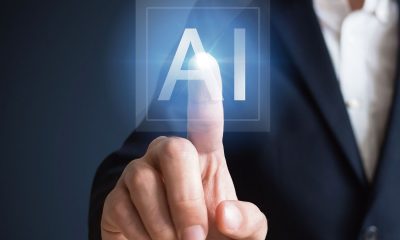
 Metaverse1 week ago
Metaverse1 week agoThe transformer birthed GenAI. Meet the man who built it – Crypto News
-

 Blockchain1 week ago
Blockchain1 week agoDeutsche Bank Considers Digital Asset Projects – Crypto News
-
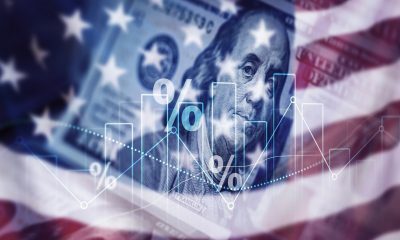
 Business1 week ago
Business1 week agoBusinesses Limit Pass-Through of Tariff Costs – Crypto News
-

 others1 week ago
others1 week agoS&P 500 reaches 6,000 for first time since February on NFP print – Crypto News
-

 others1 week ago
others1 week agoMichael Saylor Doubling Down on Bitcoin Price Prediction As BTC Holds $100,000 Level – Crypto News
-

 others6 days ago
others6 days agoAnalyst Says Bitcoin Has ‘Pretty Good’ Chance of Hitting Massive Price Target in 2026, Citing Three Technical Signals – Crypto News
-

 Technology6 days ago
Technology6 days agoBP Puts AI at the Heart of Its Efforts to Boost Performance – Crypto News
-
others6 days ago
Japan Money Supply M2+CD (YoY) increased to 0.6% in May from previous 0.5% – Crypto News
-

 Cryptocurrency5 days ago
Cryptocurrency5 days agoResistance Persists at $2,700 But Buyer Appetite Grows – Crypto News
-

 Technology5 days ago
Technology5 days agoiOS 26’s Liquid Glass redesign met with backlash from Apple users: ‘Please tone it down’ – Crypto News
-

 Technology5 days ago
Technology5 days agoiOS 26’s Liquid Glass redesign met with backlash from Apple users: ‘Please tone it down’ – Crypto News
-

 others5 days ago
others5 days agoARK Invest’s Cathie Wood Unveils Massive Price Target for Tesla (TSLA) in Five Years Fueled by Robotaxi Platform – Crypto News
-

 Technology5 days ago
Technology5 days agoOne Tech Tip: How to protect your 23andMe genetic data – Crypto News
-

 others1 week ago
others1 week agoBitcoin Flashing Bearish Signal After Failing To Break Above Major Resistance, Says Crypto Trader – Here Are His Targets – Crypto News
-

 Cryptocurrency1 week ago
Cryptocurrency1 week agoDogecoin Price Vulnerable Near Key Support. Musk to the Rescue? – Crypto News
-

 Technology1 week ago
Technology1 week agoHong Kong stablecoin regulation: New crypto law explained – Crypto News



